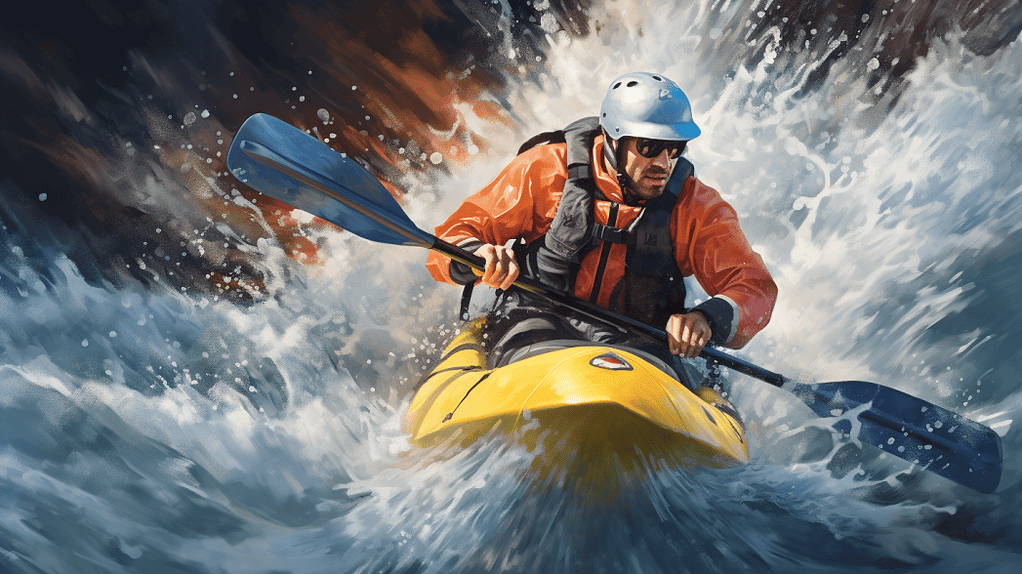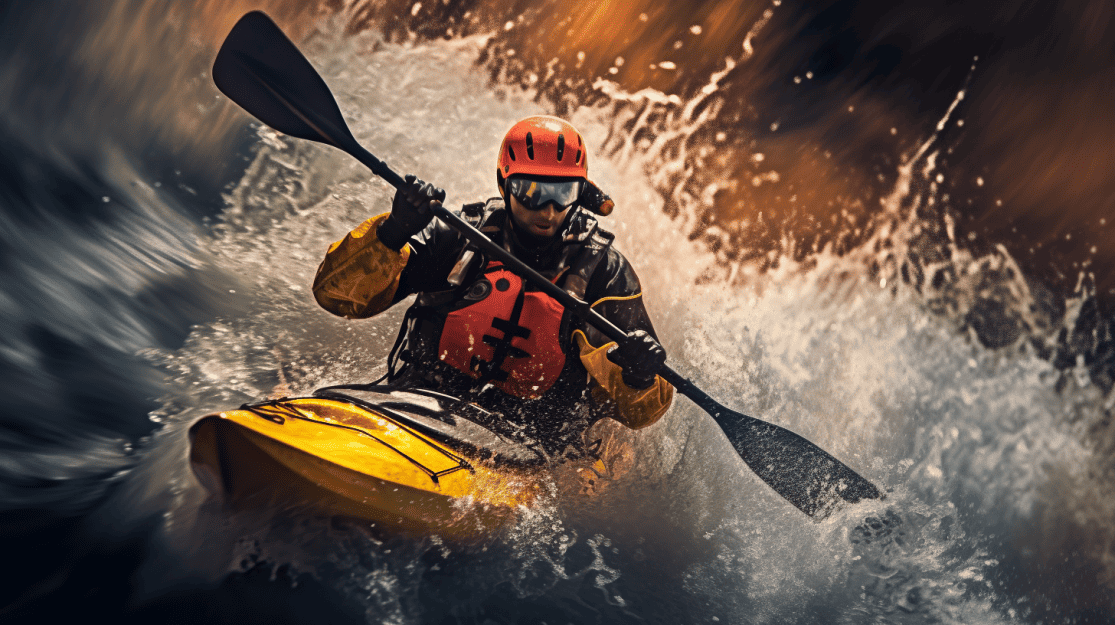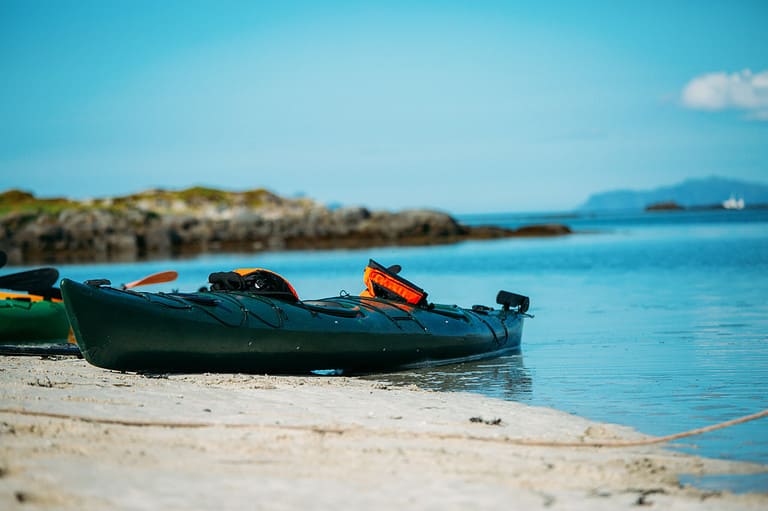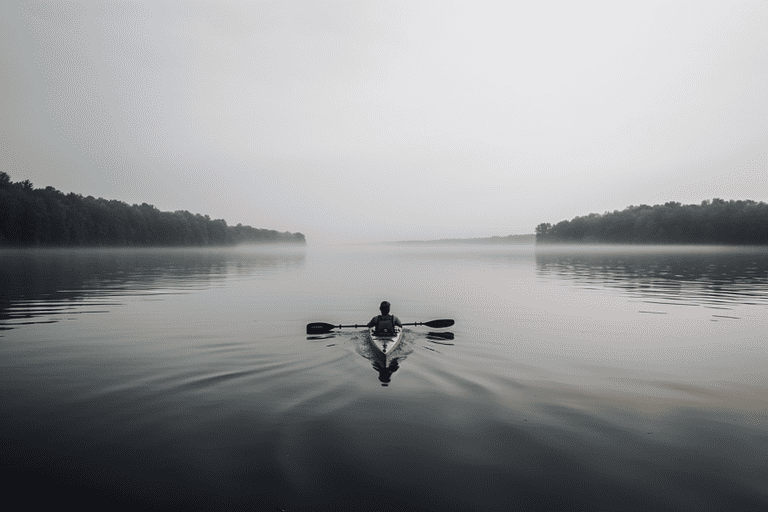The Importance Of Practicing For Emergency Situations In Kayaking
Isn’t it an intriguing twist of fate that we invest countless hours meticulously preparing for our upcoming kayaking escapades yet frequently overlook a pivotal aspect—the readiness for unforeseen emergencies? The key to recovery and making it through an event is ensuring your Emergency Situations In Kayaking planning has occurred. Our purpose here is to spotlight the gravity of this often disregarded element. Amidst the exhilaration of our aquatic endeavors, it is easy to momentarily forget that kayaking, like any adventure, carries inherent risks. It is of utmost importance that we acknowledge these potential dangers and appropriately equip ourselves with the necessary safety gear.
However, it transcends the realm of equipment; what truly holds paramount significance is our ability to navigate through unexpected circumstances adeptly. To ensure our capacity to handle any challenge that comes our way, it is vital that we master emergency techniques and diligently practice them as an integral part of our routine. As we delve deeper into the intricacies of these techniques, we must also recognize the additional value of joining safety courses. Such courses offer the guidance of experts in the field, further augmenting our preparedness level and expanding our knowledge base. Together, let us collectively explore these essential facets, harmoniously striving to transform our kayaking adventures into safer and more fulfilling experiences.
For being part of the community of responsible adventurers extends far beyond the mere sharing of enthralling tales—it encompasses our unwavering commitment to safeguarding our lives, ensuring that we emerge unscathed to narrate those remarkable tales with unwavering enthusiasm and zeal!
Key Takeaways of Emergency Situations In Kayaking
- Regular training sessions and consistent rehearsal of safety scenarios are crucial in kayaking emergencies.
- Enrolling in kayaking safety courses helps gain knowledge, practical experience, and additional certifications for a higher level of preparedness.
- Learning rescue techniques, first aid training, navigation skills, and understanding meteorological signs are essential in handling emergencies and avoiding dangerous situations.
- Proper equipment maintenance and the use of safety gear, such as PFDs, helmets, wet suits, and communication devices, are essential to ensure optimal safety in kayaking adventures.
Understanding the Risks Involved in Kayaking
In the thrilling realm of kayaking, we must have a firm grasp of the risks that await us as we navigate the exhilarating rapids. Our intention is not to dissuade or discourage you but to provide you with a crystal-clear understanding of the challenges you may encounter on the water. A comprehensive risk assessment forms the bedrock of any successful kayak adventure, enabling us to identify and mitigate potential hazards.
Among the many factors that influence risk, weather conditions profoundly impact the safety and viability of any kayak expedition. Sudden shifts in weather patterns can swiftly transform calm waters into tumultuous waves, necessitating our utmost vigilance. The formidable combination of strong winds and torrential rains can create visibility issues, posing significant challenges to navigation. Hence, incorporating a meticulous review of weather forecasts and developing an understanding of how diverse conditions influence water bodies becomes an indispensable part of our meticulous planning process.
Beyond the capricious nature of the weather, we must also acknowledge the risks associated with kayaking, such as the potential for capsizing, collisions with obstacles or other vessels, and the threat of hypothermia resulting from prolonged exposure to cold water. These scenarios underscore the critical need for comprehensive preparation, encompassing physical readiness and mental fortitude. By cultivating a resilient mindset, we ensure that in the face of adversity, panic does not take hold and we can tackle challenges with a clear head.
By proactively acknowledging these risks and meticulously preparing ourselves to mitigate them, we become integral members of a vibrant community dedicated to reveling in the joy of this thrilling sport and deeply committed to the safety and well-being of ourselves and our fellow adventurers.
Now that we have delved into the potential dangers associated with kayaking and the importance of conducting thorough risk assessments and remaining attuned to weather conditions, let us delve even deeper into the significance of safety equipment as another indispensable component, assuring safer and more gratifying kayaking experiences.
Importance of Safety Equipment
Just as a warrior doesn’t enter battle without armor, don’t venture into the water without your safety gear; the shield protects you from unpredictable elements. Kayaking is about strength and endurance, preparedness, and caution. Our safety should always be our top priority. This isn’t just about following rules or regulations but safeguarding our lives.

The importance of safety equipment in kayaking can never be overstated. Here are some key pieces we should never forget:
- Personal flotation devices (PFD) are non-negotiable for every kayaker, regardless of skill level.
- Helmets: Protecting your head from potential impact is crucial.
- Wet suits and dry suits: They help maintain body temperature in cold waters.
- First-aid kit: For treating minor injuries or stabilizing major ones until help arrives.
- Communication devices: To reach out for assistance when needed. Something like a whistle
- Utilize a Dry Bag to keep everything organized.
Equipment maintenance is also vital to ensuring our safety gear works when we need them most. It involves routinely checking, cleaning, repairing, or replacing our equipment to ensure they’re in optimal working condition.
As we journey together through the thrilling rapids and serene stretches of waterways, let’s remember that being equipped with proper safety gear can make all the difference between an enjoyable adventure and a grim ordeal. It’s more than just having tools; it’s about being responsible for ourselves and for each other.
Next up is mastering essential emergency techniques because no amount of safety equipment can replace knowledge and skills when faced with a real-life crisis situation on the waterway.
Learning Essential Emergency Techniques
In kayaking, where the unexpected can crash upon us like a relentless rogue wave, the swiftness of our response and the razor-sharpness of our skills will guide us safely through treacherous waters. These rapid reactions are not born out of magic but are the tangible results of acquiring essential emergency techniques, ensuring that we are prepared for any situation that may arise while embracing the exhilaration of kayaking.
Survival swimming extends far beyond mere flailing and hoping to remain afloat in the water. It encompasses conserving energy and deftly maneuvering through challenging currents, formidable waves, and formidable obstacles. To master survival swimming, we must delve into the intricacies of treading water with precision, utilizing diverse swim strokes tailored to varying conditions, and even mastering the art of righting a capsized kayak. These indispensable skills form the foundation for our safety and confidence in the water.
However, what unfolds when we find ourselves unexpectedly immersed in frigid waters? The specter of hypothermia looms ominously for kayakers who endure an unplanned plunge into icy depths. Safeguarding ourselves from hypothermia extends beyond merely possessing the appropriate gear; it requires a profound understanding of efficiently managing our body heat. Techniques such as assuming protective postures or seeking solace in the warmth of huddling together can make the difference between life and death in extreme circumstances.
At the core of our philosophy lies the firm belief that information alone does not provide adequate protection; the unwavering application of acquired knowledge through repeated practice instills muscle memory for these vital maneuvers. Let us never underestimate the immeasurable importance of regular training sessions, wherein we can safely replicate potential emergencies. Within these training sessions, our confidence grows stronger, and our sense of belonging within the community of passionate enthusiasts who prioritize safety above all else flourishes.
As we navigate the currents of our aquatic adventures, paddling forward into deeper waters with heightened awareness and unwavering confidence, let us always bear in mind that it is the consistent application of the learned techniques during regular practice scenarios that will ultimately equip us to confront and overcome real-life emergencies that may arise on the river or at sea. Embrace the journey of continuous growth and preparation, for it is through this steadfast commitment that we embark upon each new kayaking experience with the utmost readiness and resilience.
Regular Practice of Emergency Scenarios
It’s truly staggering to reflect upon the statistics that reveal nearly 70% of boating accidents stem from operator error rather than equipment failure. This sobering fact underscores the importance of consistently rehearsing safety scenarios to ensure we are well-prepared for any eventuality. When we embark on our kayaking adventures, it is paramount that we possess the readiness to respond swiftly and effectively in the face of emergencies. This is where scenario simulations step into the spotlight, playing a pivotal role in our preparedness.
Engaging in these simulations serves multiple purposes—it enables us to identify potential hazards, equips us with the necessary skills to navigate diverse emergencies, and instills confidence in our abilities to make informed decisions under pressure. Just envision being unexpectedly overturned by a powerful wave—do you possess the knowledge and dexterity to right yourself? And what if a fellow kayaker capsizes—do you possess the expertise to execute a successful kayak rescue? We can acquire these critical skills through dedicated practice and hands-on simulations.
Regarding the essence of preparation, it is essential to acknowledge that practice truly does lead to perfection. This perfection can be the literal distinction between life and death in kayaking emergencies. It is not sufficient to possess theoretical knowledge of the necessary steps to be taken; we must strive to translate that knowledge into practical implementation until it becomes second nature to us.
Emergency drills serve as an indispensable component of our comprehensive training regimen. These exercises allow us to gain hands-on experience in handling real-life situations, ranging from sudden weather changes and equipment malfunctions to potential medical emergencies. By routinely immersing ourselves in these drills, we cultivate the ability to respond calmly and efficiently when faced with unexpected challenges.
As we continue our journey towards becoming seasoned paddlers who prioritize safety above all else, let us explore the prospect of adding another layer of certification to our repertoire—joining kayaking safety courses. These courses serve as a valuable resource, bestowing us with expert guidance, enriching our knowledge base, and equipping us with the latest industry insights.
Through our unwavering commitment to ongoing training, scenario simulations, and participation in safety courses, we forge a path toward becoming exemplars of kayaking safety. Together, let us embrace this continuous learning process, ensuring that every stroke we take is one of knowledge, proficiency, and unwavering dedication to our safety and that of our fellow adventurers.
Joining Kayaking Safety Courses
Embarking on a thrilling kayaking journey can be an exhilarating experience, but it’s essential to acknowledge the potential dangers within those unpredictable waters. To navigate with utmost confidence and skill, immersing yourself in a comprehensive safety course becomes a wise and proactive choice. By enrolling in such courses, we embark on a transformative learning adventure that equips us with the knowledge and tools needed to handle any emergencies that may unexpectedly arise.
At the heart of these safety courses lies the expertise of experienced instructors. Their guidance is a beacon, illuminating the path toward invaluable knowledge and practical experience. With their expert guidance, we delve into various scenarios, honing our ability to react swiftly and appropriately when faced with unforeseen challenges. The wisdom and insights they impart become invaluable assets as we navigate the intricate waters of kayaking.
When selecting a safety course, it is crucial to consider factors such as our current level of proficiency and the specific type of kayaking we wish to pursue—be it the open expanses of the sea or the winding rivers that weave through majestic landscapes. A well-aligned course selection ensures that we receive tailored instruction that caters to our individual needs, allowing us to grow and progress in our kayaking journey in a manner that best suits our aspirations.
Beyond acquiring knowledge and skills, participating in safety courses provides additional benefits that extend beyond kayaking. These courses foster a sense of community, bringing together like-minded individuals with a passion for adventure and a commitment to safety. The camaraderie and support from these shared experiences create a network of fellow adventurers who understand and appreciate the importance of preparedness and vigilance. Together, we become part of a community dedicated to enjoying our kayaking pursuits responsibly and safeguarding the well-being of ourselves and others.
So, as you embark on your kayaking odyssey, consider the immeasurable value that enrolling in a safety course can bring. Embrace the opportunity to learn from seasoned instructors, immerse yourself in practical scenarios, and connect with fellow kayakers who share your passion. Equip yourself with the knowledge, confidence, and skills needed to navigate the waters with a heightened sense of preparedness. By investing in your safety education, you embark on a transformative journey that unlocks the full potential of your kayaking adventures while ensuring you can navigate the unpredictable waters with utmost confidence and skill.
Here’s a snapshot of what these courses typically involve:
| Course Content | Description | Benefits |
| Rescue Techniques | Understanding various rescue methods like T-rescue or Eskimo roll. | Increases survival chances during capsizes. |
| First Aid Training | Learn basic medical aid techniques for common injuries. | Enables immediate response to injuries sustained during kayaking. |
| Navigation Skills | Map reading, compass use, GPS handling. | Saves money by reducing the need for frequent replacements. |
| Weather Forecasting | Understand meteorological signs & patterns. | Learn basic medical aid techniques for joint injuries. |
| Equipment Maintenance 101 | Proper care for equipment longevity. | It helps avoid dangerous weather conditions on water bodies. |
We must remember that no amount of training replaces the genuine presence of the mind in an emergency. Regular practice helps embed these lifesaving skills into our muscle memory, enabling quick reactions when necessary.
Don’t underestimate the power of preparedness—it could be the difference between life and death on the waterways! So let’s ensure we put ourselves through rigorous safety drills until they become second nature.
Frequently Asked Questions
What type of kayak is best for beginners?”
Did you know 70% of kayaking beginners start with a sit-on-top kayak? They’re ideal for learning basic paddling techniques and understanding kayak safety. We recommend them as they’re stable, easily maneuverable, and less intimidating for newbies. If you capsize, it’s simpler to re-enter from the water compared to other types. So we say, join our kayaking community with a sit-on-top model – it’ll give you confidence and fun while mastering this fulfilling sport.”
How do I maintain my kayak for longevity?”
We’re all about making our kayaks last, aren’t we? Proper kayak storage and cleaning methods are key. Always clean your kayak after use to remove dirt and salt. Use mild soap and water, avoid harsh chemicals. Keep it in a cool, dry place out of direct sunlight for storage. Store it upside down or on its side to prevent hull distortion. We’re in this together – let’s take care of our kayaks so they’ll serve us for years.”
What are some good locations for kayaking?”
We’ve discovered a wealth of beautiful locations for kayaking. If you’re drawn to coastal destinations, try the stunning archipelagos of Sweden or the serene beaches of Baja California. We recommend the wild rapids of Colorado’s Arkansas River or the lush Amazon Rainforest for river expeditions. Remember, each place offers unique experiences and challenges, so research and preparation is crucial. Kayaking is about more than just paddling; it’s about being part of an adventurous community.”
Are there specific dietary guidelines to follow before kayaking?”
“We understand, empathize, and stand with you in the quest for optimal kayaking performance. The importance of hydration cannot be overstressed; it’s fundamental in maintaining energy levels. Energy-rich foods like complex carbohydrates, fruits, and lean proteins should dominate your pre-kayaking meal plan to provide sustained vigor. Remember, your dietary choices can make or break your kayak adventure. Join us as we paddle towards healthy eating habits that enhance our love for this thrilling activity.”
How does weather affect kayaking conditions?”
“We’re always monitoring weather predictions before we hit the water. Weather changes can drastically affect kayaking conditions, especially when storm kayaking. High winds and heavy rains can create choppy waters or dangerous currents, making it harder to control our boats. Even seemingly minor shifts in temperature or cloud cover can change the water’s behavior. So, we’ve got to understand these effects to ensure we’re prepared and stay safe during all of our kayaking adventures.
Conclusion
We’ve shared the importance of being prepared for emergencies when kayaking. Did you know that according to American Canoe Association, 70% of all fatal kayaking accidents happen due to not wearing a life jacket? That’s why it’s crucial to regularly practice emergency scenarios and equip ourselves with essential safety gear. By doing so, we’re increasing our survival chances and ensuring a more enjoyable kayaking experience.







